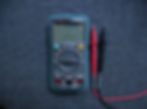FAQ: How does an electronics inspection work?
- Zap Consulting
- Oct 14, 2022
- 3 min read
Updated: Feb 18
More than 100 insurance companies across the U.S. trust Zap Consulting to perform onsite damage assessments for air conditioning, appliances, and electronics claims. Once the onsite investigation is complete, the final Zap report will tell you everything you need to know to resolve your claim. But how does an electronics inspection actually work? Is an onsite inspection really necessary to confirm the damages?
In this article, we'll review some tools of the trade and shed light on our comfy niche in the claims industry.
Investigative Tools for Electronics Inspections
See below just a few examples of basic tools of the trade. This list is by no means exhaustive! All claims and inspections are different and a variety of tools can be useful in an electronics or appliance investigation.
Digital multimeter - One of the most useful tools in the belt, a multimeter can measure a variety of electrical data, including voltage, current, and resistance. Multimeters can be used to test everything from electrical outlets to well pumps.

Non-contact voltage tester - The name says it all. This device detects voltage without subjecting the user to potential electric shock. This device can be used to verify if voltage is present at an electrical fixture, such as a ceiling fan.
Infrared thermometer - These devices are available in different form factors and are used to test the temperature of any appliance or electronic that heats or cools, such as refrigerators, space heaters, curling irons, microwaves, and freezers.

HDMI display tester - An awesome tool that can be used to determine if audio/video signal output is produced from an HDMI port. This device is useful for testing televisions, media players, and cameras.
Tape measure - While it may sound trivial, a tape measure is an incredibly valuable tool in the investigative process. Particularly in the selection of like-kind and quality replacement options.
Experienced field technician - Last but certainly not least, an experienced field technician is ESSENTIAL to completing a comprehensive electronics inspection. Zap techs are our eyes and ears in the field, and their expertise paired with our in-house research process is key to the quality reports we produce.

Is an onsite inspection necessary for electronics and appliance claims?
Onsite inspections offer a host of benefits. When complete, you will know exactly which items are actually damaged from the claimed loss, which items can be repaired, as well as the recommended payout to restore the insured to pre-loss condition. Not to mention, an easy-to-read, comprehensive final report detailing all aspects of the investigation.
However, an onsite inspection is not always possible. Items get repaired, replaced, and discarded. While the damage cannot be verified, our desktop review services can help evaluate repair/replacement pricing as well as validate the service providers used to perform the work.
How does a Zap electronics and appliance investigation work?
Let's lay it out there in 3 simple steps:
#1 Inspection - A Zap-certified field technician is dispatched to the insured's residence. The experienced field technician completes diagnostic testing and troubleshooting of the claimed items and documents his or her findings thoroughly.
#2 Reporting - Our in-house analyst team reviews and evaluates the technician's findings to generate the final, comprehensive, and easy-to-read report with photos, repair or replacement recommendations, cause of loss verification, and recommended RCV/ACV settlement amounts.
#3 Delivery - The final report is delivered to the adjuster. Based on our findings, claims adjusters are able to quickly and accurately settle their claims.

